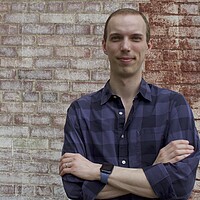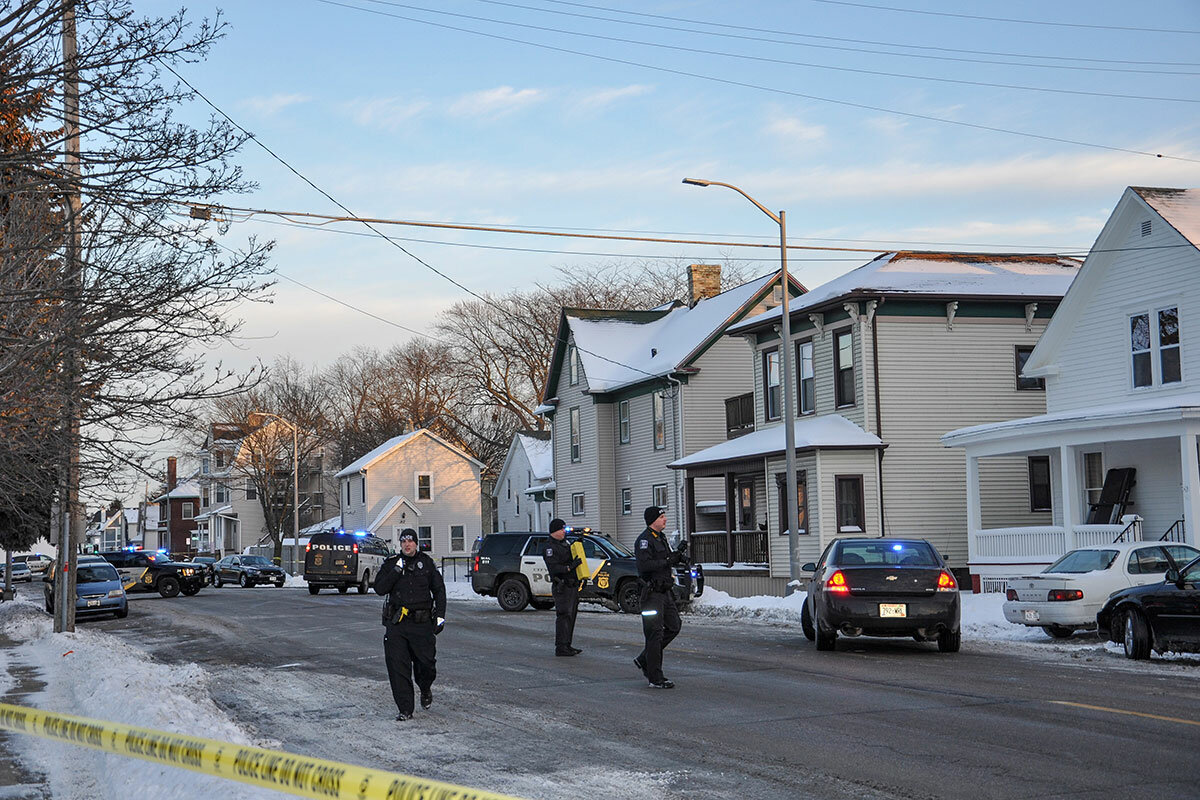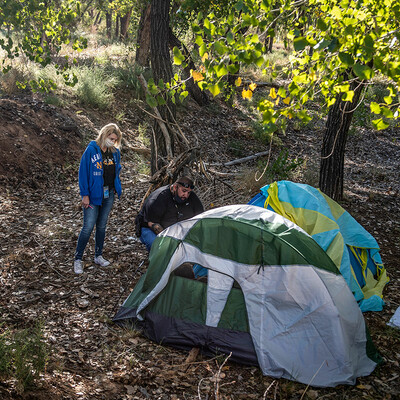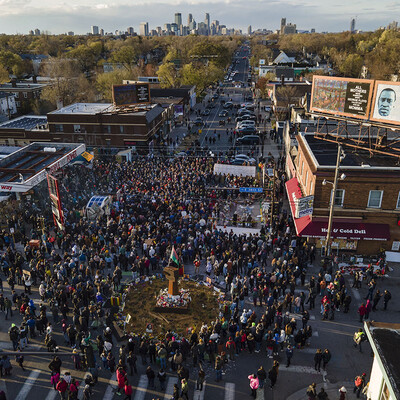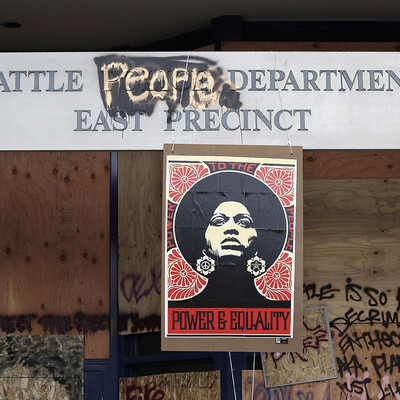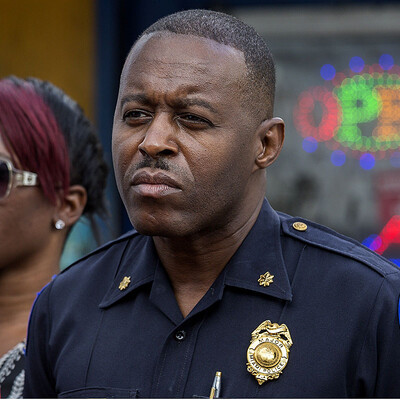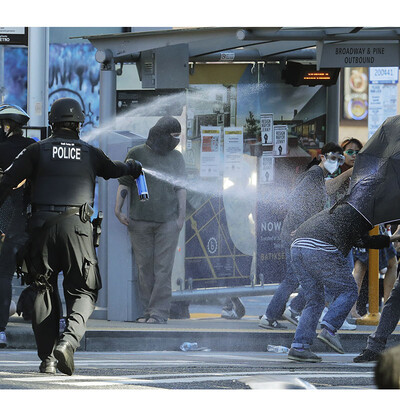To build trust, Racine police moved into the neighborhood
Loading...
Just south of Milwaukee in the early 1990s, the small city of Racine had the highest violent crime rate in Wisconsin and one of the state’s most exhausted police forces.
In an era of law-and-order policing, later codified by the 1994 Crime Bill, tough-on-crime policies weren’t working. The city had tried sending in more officers and giving them more authority. But it had become clear that they couldn’t arrest their way out of the problem.
So the police department moved in.
Why We Wrote This
At a time of hostile debate around policing in America, building trust is both risky and vital. Racine’s model, pioneered in the 1990s, isn’t a fast fix – it takes time, commitment, and real estate.
Developing an approach that’s since been copied around the region, Racine’s police department – led by then-chief Richard Polzin – identified multiple at-risk neighborhoods and bought houses in them. Officers stationed during normal work hours in these Community-Oriented Policing (COP) Houses were tasked to build local relationships, learn how to help, and act as a partner in solving problems.
It worked. In one neighborhood the violent crime rate fell 70%, part of a three-decade drop in the city’s overall crime rate. Racine now has six COP Houses. Challenges remain, says Chief Maurice A. Robinson, but the police have residents’ trust.
“When every police department in the country is trying to fight this uptick in violent crime, if the public doesn’t trust us it makes it more difficult” to get the information needed to investigate certain cases, says Mr. Robinson, in a phone interview.
They couldn’t have that trust at a more critical time. In a Gallup survey last year, 48% of respondents expressed confidence in law enforcement – the first time in almost three decades that confidence was in the minority. Last year’s wave of protests against police brutality seem to confirm what the numbers suggest: Public trust in law enforcement has plummeted in the past 10 years.
This trust gap between the public and police is a destructive status quo, says Barry Reynolds, assistant professor of criminal justice at Cardinal Stritch University in Milwaukee. Without trust, he says, communities grow less safe, and community members participate less in their own safety. The more both parties grow estranged, the worse the problem becomes.
Amid hostile debate around American policing, attempts to build trust can be risky. But this era of police scrutiny won’t go away without reform, says Professor Reynolds, who spent nearly 40 years in law enforcement. He’d like his lifelong profession, and the public around it, to take this moment as an invitation to change, as Racine did 30 years ago. Trust will come, he says, when law enforcement and the community find ways to work together.
“Rather than being seen as adversarial, you’re seen as partners in the whole production of public safety,” says Professor Reynolds. “That can’t come about unless there is some type of a connection, a personal connection.”
Who trusts the police
Today, connection depends almost entirely on partisan and racial identity. Per 2020 data from Gallup, Black Americans and Democrats are overwhelmingly more critical of law enforcement than white Americans and Republicans.
That gap has as much to do with people’s social networks as their personal experiences. Police disproportionately operate in Black and lower-income communities, hence people in those communities are more likely to know someone who had an encounter go wrong. Over generations, those stories have built a collective view that law enforcement isn’t trustworthy.
The opposite is true for white, upper-class Americans, who more often think of bad policing as the fruit of a few bad apples. “The more affluent and the more white the neighborhood is, the less they have a negative perception or experience of the police,” says Hans Menos, vice president of law enforcement initiatives at the Center for Policing Equity.
Yet support among white Americans has started to wane, as cases of police brutality have damaged policing’s national reputation. In the last 10 years, police scrutiny has accelerated rapidly and law enforcement struggled to adjust, says Professor Reynolds.
Unused to such intense criticism, police officers and unions often counter that the public doesn’t understand their job, says Rachel Moran, an associate professor at the University of St. Thomas School of Law in St. Paul, Minnesota. Many within the profession, she says, have grown more insular and defensive amid criticism they consider unfounded.
“We like to think of ourselves as being kind of a static profession,” says Professor Reynolds. Over the past 10 years, “we haven’t changed a whole lot. But society as a whole has changed markedly, and the demands that society is now placing upon their policing agencies [are] much different.”
In some parts of America, the chief demand is consolidation. Many local governments are reducing low-level interactions between police and the public, like traffic stops, in an effort to limit potential conflict. Others are increasing the role of mental health experts or other professionals in emergency response.
“What it looks like is right-sizing the police,” says Dr. Menos.
“Stop the violence before it happens”
Yet alone, reducing the number of times the police and public interact won’t eliminate the trust gap. Communities, meanwhile, remain less safe than they could be with cooperation.
Reversing the trend toward distrust begins at the local level, where police can build relationships and better understand community needs. That’s a job for all officers on the force, not just those in COP Houses, says Mr. Robinson, the Racine police chief. He encourages officers to spend part of their day on foot or bike, where they can more easily meet Racine residents. Every resident can be a partner, and every partner can be just as effective as the police – if not more so.
“The members of our community who are aunts, uncles, sisters, cousins, brothers, hold more sway and hold more influence over these young people [who make up an increasing share of offenders] than the police do,” says Mr. Robinson. “We are after the fact. The most effective partnership is if communities can help us stop the violence before it happens.”
That level of focus is more difficult when there are staffing shortages, like Racine’s roughly 200-officer department is facing now. America has more than 18,000 police departments, around half with fewer than 10 officers. Cuts in benefits and salary can make it harder to keep existing officers or attract replacements. Chief Robinson is trying to fill the shortage with new officers who better represent the city. Black residents make up more than 40% of Racine’s population, he says. More Racinians on the city’s police force make working with the community easier.
It can’t be us and them, he says. “It has to be us.”
Attracting officers, though, is more difficult in the age of social media, when an instance of police brutality anywhere can damage the reputation of police forces everywhere. That vulnerability makes local relationships more important, says Laurie Robinson, professor emerita of criminology, law, and society at George Mason University in Fairfax, Virginia.
“It’s really about listening to and working with the community to identify where the issues of public safety lie and agree on those,” says Ms. Robinson, who co-chaired the White House Task Force on 21st Century Policing in 2014. After the police and community label problems together, they can “agree on the approach that should be taken to address them,” she adds.
“They’re respecting us”
That’s an approach Racine police officers share. In fact, they released a playbook about it. Earlier this year, Chicago’s police department visited Racine to learn about the COP House program, and has since started one of its own. Mr. Robinson, who became Racine’s chief in May, takes such visits as a sign that their programs are working. But his eyes are on his own backyard, he says.
Last June, in the aftershocks of George Floyd’s murder, rioters burned a COP House in Racine’s Villa Street neighborhood. Four men were convicted of arson, two of whom were Racine residents.
But Villa Street, which had come to view the COP House as a community center, responded with a cookout. Bringing about 150 children and adults from the neighborhood together, the event affirmed what the house represented: a respite for the police and community to cooperate. Named for Thelma Orr, a local civil rights activist, the COP House had become a monument of trust.
During one protest, community policing officer Sgt. Ryan Comstock stood in front of a line of demonstrators.
“We understand why you’re out here,” he said, in a video released by the Racine Police Department.
At one point, someone threw something at Mr. Comstock, and immediately the crowd turned around and called out the behavior. It wasn’t how Racinians interact with their police.
“They’re respecting us,” a woman demonstrating said, “so you need to respect them.”





